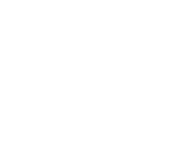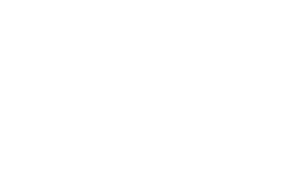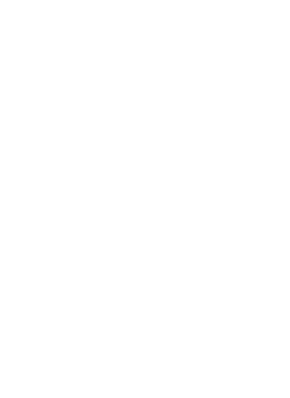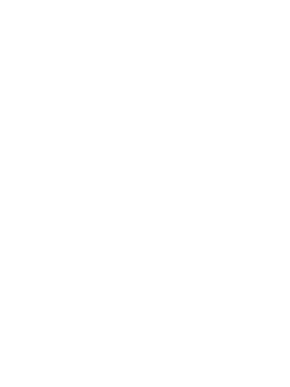 |
 |
 |

|
Cindy Wright: Utopia, 2016, Photo: Tom De Visscher
|
|
 |
XY -10 Year GlazenHuis
6/5/2017-17/9/2017
“Without worms the earth would be infertile. Without art she would also..”
—Jan Fabre
The upcoming tenth-anniversary exhibition entitled ‘XY’ – ‘X’ for 10 and ‘Y’ for years- at the Lommel GlazenHuis is the glass museum’s twenty-fourth show. GlazenHuis has invited twenty-four artists and designers to demonstrate up-to-date uses of glass within the field of fine and applied arts in Belgium.
|

|
Posted 21 April 2017
|
Share this:
|
|
Material is intriguing. Wars are conducted for materials. Popes, emperors and kings have derived their power from materials while alchemists have transformed materials and architects, craftsmen and artists have given form to materials.
The Belgians’ feel for material must be in their genetic code. Belgium, whose ethnic name Belgae is derived like the Proto-Celtic word bolc'h -the flax seed box that literally means ‘to swell (particularly with anger/battle fury)’ –plays a leading role in modern art and design. Gallia Belgica since the Middle Ages was one of the richest, most highly developed regions in the world and as a Kingdom grew into the fourth most powerful economy. In addition to inventions drawn from materials such as asphalt, sodium carbonate, zinc and bakelite are the traditions of the manufacturing sector and industry alongside the application of crafts as the backbone of Belgium's design industry where glass plays an important role in the cultural values that form Belgium’s identity.
|
|
|
|
|
|
|

Ann Veronica Janssens: Black Bar, 2014
|
|
|
|
|
|
|
From its origin as as primal matter to its status as a contemporary, cutting-edge material, glass has a long history: Since the thirteenth century B.C.E., natural glass alongside hand-made glass beads and counters are well-known.
Five millenniums ago, the origin of glass in the Middle East was discovered by fusing sand with chalk and a carbonate of soda and potash. Two millenniums later, the glass blowing pipe was invented.
The Celts were the first to manufacture glass outside of the Mediterranean. Diffusion of glass knowledge, its techniques and products throughout the Mediterranean was spread by the Romans into Northern Europe where glass furnaces were built alongside the great rivers, in the sandy grounds of large forests. Slowly, the glass industry developed verroterie -beads and jewellery -and verrerie for fabrication of vessels and containers. During the fourth century, the first muff cylinder made flat glass by blowing large “bottles” together with sand-cast slabs and this was the origin of window glass to protect from cold, rain and wind. In the second century, stained glass and leaded windows were developed then glass painters established a rich Occidental tradition. A revival occurred in 1537 when Venetian glassmakers arrived in Antwerp and introduced cristallo for decorative glass, vessels and drinking glasses and vitrail for window glass, mirrors, spectacles and lenses. Industrialisation of glass making in the early 19th century featured a mirror (flat) glass machine first developed in Belgium by Émile Fourcault was later used globally; the crystal blowing huts or glasshouses which led to development of glass and mirror factories for flat and hollow glass production, in and around Charlerois en Liège along with several refineries throughout Belgium including Val Saint Lambert.
Over time, the legendary anger transformed into a mild anarchy with humour and fantastical or absurdist and surreal view of life as within all major art styles as Art Deco or Jugendstil and Modernism a generous application of glass was realized.
The silver sand that surrounds Lommel is still used to produce the finest glass and crystal goods as much for the recycling of packaging and flat glass concentrates, in an industry that processes 1 million tonnes of glass waste each year.
|
|

|

|

|
The upcoming tenth-anniversary exhibition entitled XY 10 YEAR GLAZENHUIS will be a mix of the usual suspects and new collaborations, fresh works and reproductions: glass objects, jewelry, sculptures, installations, photographs, paintings, videos, and performances. In other words, a selection perfectly in line with the GlazenHuis’ ideology. With an impressive list of artists on display, GlazenHuis underlines the relevance of the material of glass in contemporary art. The wide array of artists who agreed to participate can also testify to the reputation our museum has built up during the past decade.
This very interesting selection of works by visual artists, studio glass artists, glass artists and designers exhibits the role of art in our modern society and an on-going process of cross fertilization and the shared languages of industrial design, craft and art. It’s no coincidence that the countries with the happiest people are where culture and art play a vital role in shaping and connecting the past and present with the future. The fearless statements by artists in ‘XY’ conquer our hearts.
To arrive at their essence, each visual artist may have wished-away previously acquired knowledge as if to be born again and able to ask new questions beyond the known world of materials and their techniques, applications, handicraft, decoration or community-based goals or, as Merlin Donald explains: “Most art is metacognitive in nature. Metacognition is, by definition, self-reflection. Art is self-reflective. The artistic object compels reflection on the very process that created it —that is, on the mind of the artist, and thus of the society from which the artist emerged.”
And through their glass we can look at ourselves and the world.
Curator: Jeroen Maes
|
|

Nel Verbeke: Embrace Melancholy -The Mirror l Hourglass, 2014-2016
|
|
|
|
|
|
|
Participants:
Warner Berckmans , Karin Borghouts, Lieven De Boeck, Peter De Cupere, Wim Delvoye, Maria Dukers, Mariken Dumon, Jan Fabre, Linde Hermans, Ann Veronica Janssens, Lore Langendries, Gautier Pierson, Klaar Prims, Ilse Van Roy, Hans Op De Beeck, Anna Torfs, Sylvie Vandenhoucke, Koen Vanderstukken, Koen Vanmechelen, Christine Vanoppen, Nel Verbeke, Karen Vermeren, Kristof Vrancken and Cindy Wright
Jan Fabre (1958, Antwerp/B) is an artist, playwright and author, as well as a choreographer and stage designer; his disciplines include both the performing arts like dance and theatre and visual arts like drawing, graphics, installation and sculpture. Like other Flemish wizards such as Leo Copers and Wim Delvoye, Fabre creates an imaginary world. In that respect, he fits perfectly into the amazing world of Flemish culture and its tradition of fantastic art. In his book "Jan Fabre / Homo Faber", Giacinto Di Pietrantonio writes: “The metamorphosis, the cycle of birth-life-death-rebirth, is central to the work of Fabre who, like an alchemist in earlier times, substitutes life for death, breathing new life into art by giving shape to mind and matter. Fabre's entire oeuvre may be regarded as an attempt to achieve the dimension of beauty from the state of pain and sorrow to which, as human beings, we are all subject. It represents the attempt by a modern Prometheus to let light shine through from a state of darkness.”
The works of Ann Veronica Janssens (1956, Folkestone/UK) disorient the spectator: the non-material and the void are key features of her work through which the spectator becomes aware of the process of observation. Often, Janssens introduces simple interferences together with the use of primary forms and industrial materials which – together with air, light, water, fog, wind, reflection and lustre, sound and colour – provide the intangible elements with which her sculptures, installations and films take shape.
|
|

|

|

|

Koen Vanmechelen, The Accident 2013,
Photo: Magali Merzougui
|
|
Kristof Vrancken (1982, Hasselt/B) is also a photographer, whose humor and sense of the absurd is often a lens through which he examines the relationship between man and his environment. Gautier Pierson (1973, B) paints portraits of Lommel’s inhabitants for the glasstower in the GlazenHuis. Karen Vermeren (1982, Ghent/B) examines the landscape tradition then paints and draws on glass with structures, colors and gestures that deliver new panoramas to change our focus.
The eclectic, often absurdist works of visual artist Wim Delvoye (1956 Wervik,/B) activates the reactions of spectators between their notions of what is attractive and repulsive or repellent to the point where he ignores the boundaries between advertising and popular culture and art, the fine and decorative arts. Koen Vanmechelen (1965, Sint-Truiden/B) is an expert in the field of genetic engineering who is mesmerized by the idea of getting a perfect race. His process is not as a scientist but as an artist who is passionate and humorous. Not only are there live chickens and eggs but stuffed animals as well as sculptures, chicken portraits, drawings, videos and installations. All the work concerns various topics on social and ethical issues such as biotechnology, genetic engineering, cloning, globalisation and multiculturalism.
|
|
|
|
|

|

|

|
The aesthetic and geometrical use of materials in combination with sober, spatial and well-crafted design is found in the works of Klaar Prims (1972, Antwerp/B), Ilse van Roy (1978, Leuven/B), Christine Vanoppen (1962, Hasselt/B), Anna Torfs (1976, Hasselt/B), Warner Berckmans (1966, Wilrijk/B) and Sylvie Vandenhoucke (1969, Ronse/B) who all pursue the optical changes of light, color and material where the window, the container, the small ornament and the sheet of glass are receptacles for the monumental appearance of light.
Linde Hermans (1974, Hasselt/B) is product designer of shoes, handbags, jewelry and textiles while Lore Langendries (1988, Hasselt/B) is a designer who examines her profession, specifically: the interaction between the manual and mechanical, the unique product and mass-produced objects alongside aspects such as tactility and quality of the material, digital technologies and her own subjectivity including her intuitive role as the designer. Her work behaves like hanging pendants but are portable sculptures.
|
|

Anna Torfs, Parts 2011 High gold, Photo: J.Kviz
|
|
|
|
|

|

|

|

Mariken Dumon, Honingpot 2012 HR image by Lieven Herreman
|
|
Nel Verbeke, (1989, Poperingen/B) calls herself a ‘concept-designer’ who starts the design process with a story, concept or problem and, a statement before she even considers the eventual shape or function. Multiple media and disciplines are explored through her imagination, thinking and research before finding the ultimate possibility of discovering new ‘languages' that can generate new shapes and meanings.
As Studio glass artist Mariken Dumon (1983, Overijse/B) blows and forms the glass out of the hot mass in synch with a creative process where thinking, reflection and experimentation are equally important. Through the development of skills in non-traditional ways she finds new solutions. Serendipity or fluke are here the keywords.
Production: © GLAZENHUIS
Partners: CIRVA, Marseille
See the Agenda Glass is more!>
GLAZENHUIS
Dorp 14
3920 Lommel, Belgium
+32 (0)11-541335
info@hetglazenhuis.be
www.hetglazenhuis.be
|
|
|
|
|
|
|
SUMMER OF GLASS
In addition to the tenth anniversary exhibition, nineteen other glass-related projects will be organized around the city of Lommel, under the name “Zomer van Glas” (Summer of Glass). What could be a better reason to adjust your summer plans and head to the north of Belgium and finally visit this city and its glass museum?
Gauthier Pierson (performance’ 4-7 May)
Carrot of Glass (theatre play, 9-10 June)
Kids designing glass mascot (studio work, 3-4 June)
Pop-up glass beach (studio work, 25-27 August)
Expo Vitrum et Lumen (exhibition, 11 June – 17 September)
www.zomervanglas.be
Zie Duitse Militaire Begraafplaats> Agenda>
|
|
|
|
|
|
|


